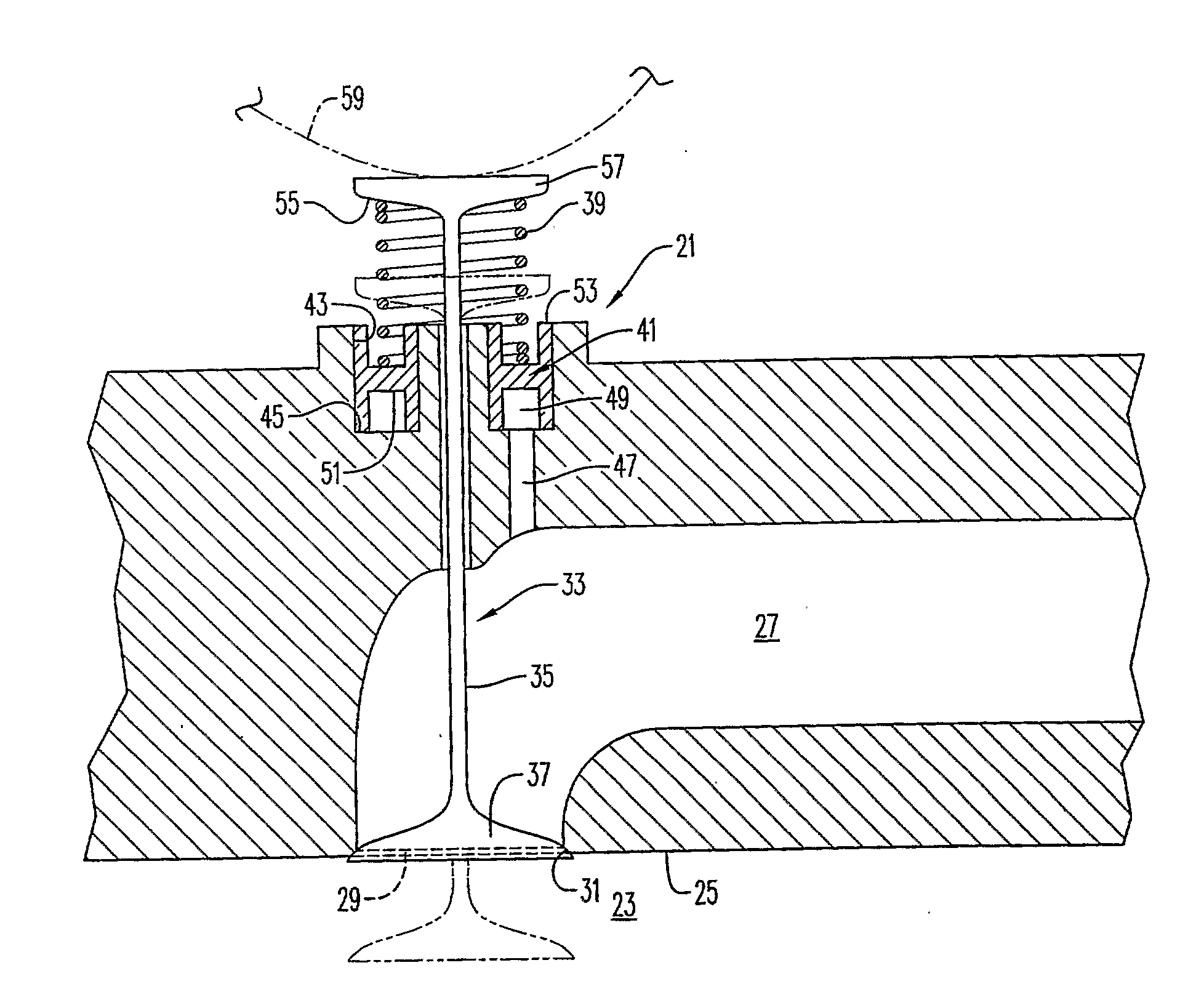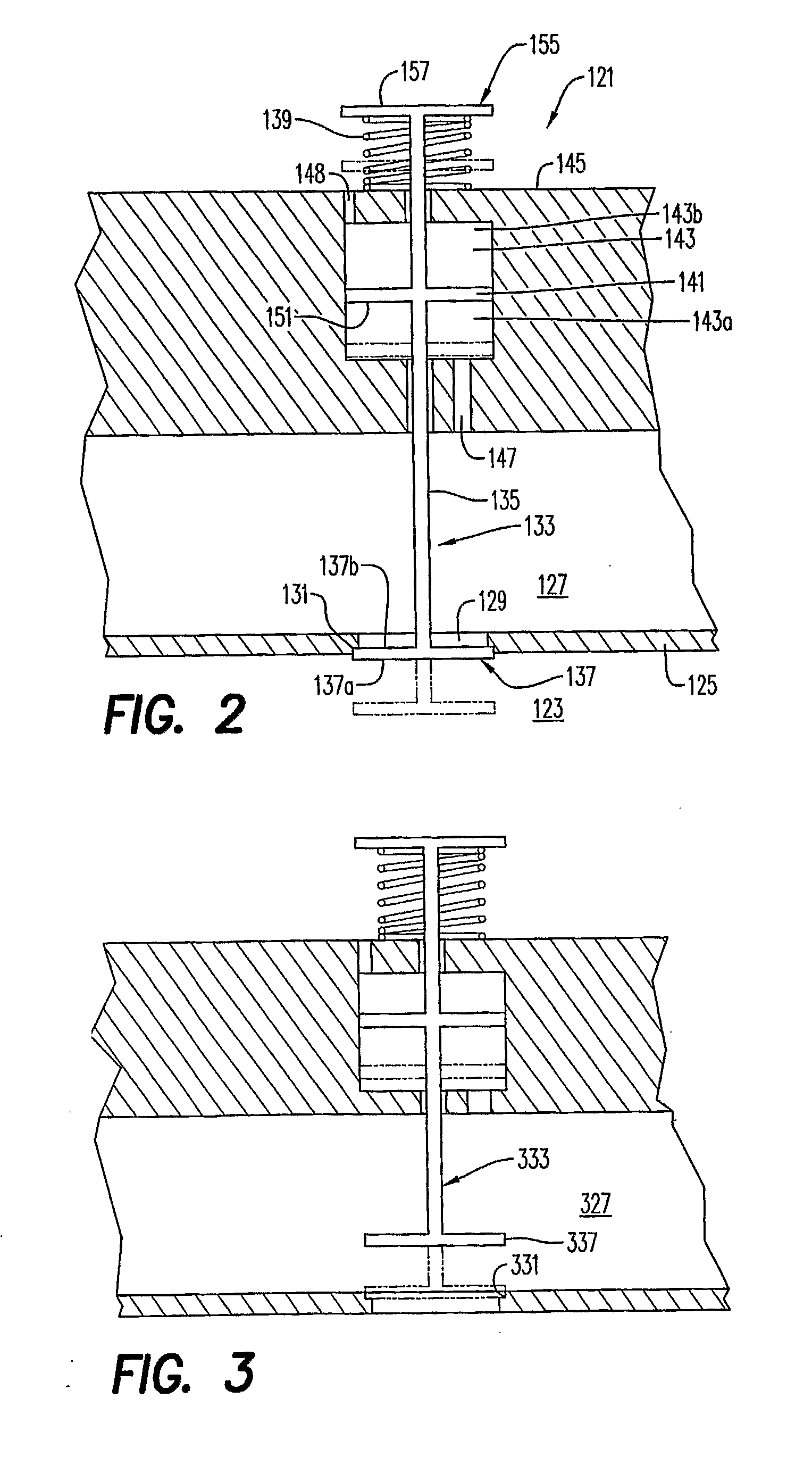Reciprocable member with Anti-float arrangement
a technology of anti-float arrangement and reciprocating member, which is applied in the direction of valve arrangement, machines/engines, mechanical equipment, etc., can solve the problems of limiting engine braking power, valve seat wear due to uncontrolled valve closing, and damage to the valvetrain, so as to reduce the problem of valve float, high service cost, and high precision requirements
- Summary
- Abstract
- Description
- Claims
- Application Information
AI Technical Summary
Benefits of technology
Problems solved by technology
Method used
Image
Examples
Embodiment Construction
[0013]An exhaust valve arrangement 21 with an anti-float arrangement according to an embodiment of the present invention is shown in FIG. 1. While use of the present invention in conjunction with an exhaust valve arrangement is a possible application of the invention, it will be appreciated that the present invention has applications in other areas involving reciprocating members, as well. The exhaust valve arrangement 21 comprises a cylinder 23 having a top end 25. An exhaust conduit 27 is connected to the cylinder 23 by an opening 29 in the top end 25 of the cylinder. The opening 29 comprises a valve seat 31.
[0014]A valve member 33 comprising a valve stem 35 and a valve head 37 on the valve stem. The valve member 33 is movable between a closed position in which the valve head 37 is received in the valve seat 31 and an open position (shown in phantom) in which the valve head is spaced from the valve seat.
[0015]In the illustrated embodiment, the valve member 33 is ordinarily urged t...
PUM
 Login to View More
Login to View More Abstract
Description
Claims
Application Information
 Login to View More
Login to View More - R&D
- Intellectual Property
- Life Sciences
- Materials
- Tech Scout
- Unparalleled Data Quality
- Higher Quality Content
- 60% Fewer Hallucinations
Browse by: Latest US Patents, China's latest patents, Technical Efficacy Thesaurus, Application Domain, Technology Topic, Popular Technical Reports.
© 2025 PatSnap. All rights reserved.Legal|Privacy policy|Modern Slavery Act Transparency Statement|Sitemap|About US| Contact US: help@patsnap.com



